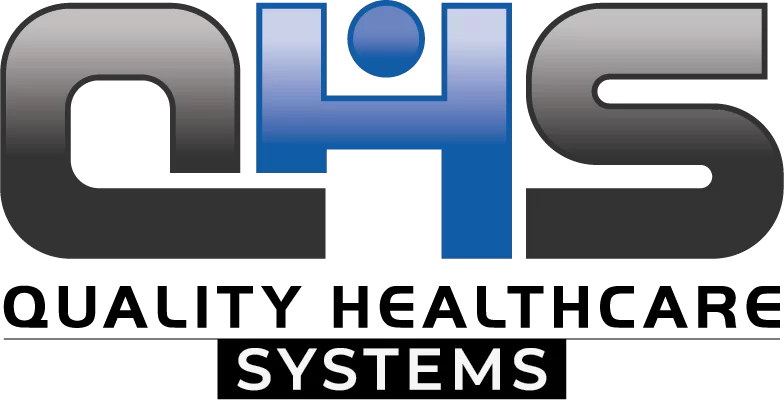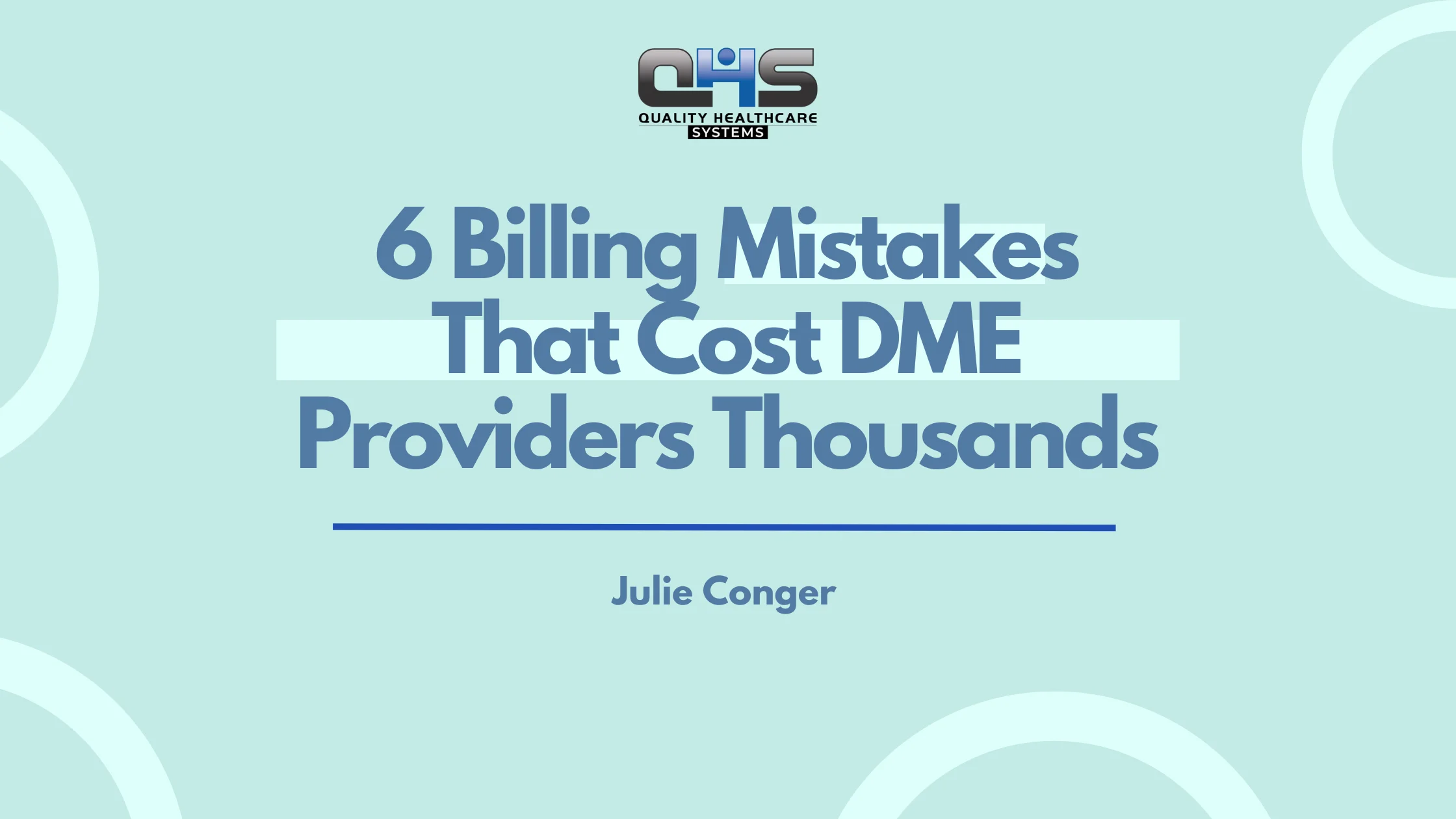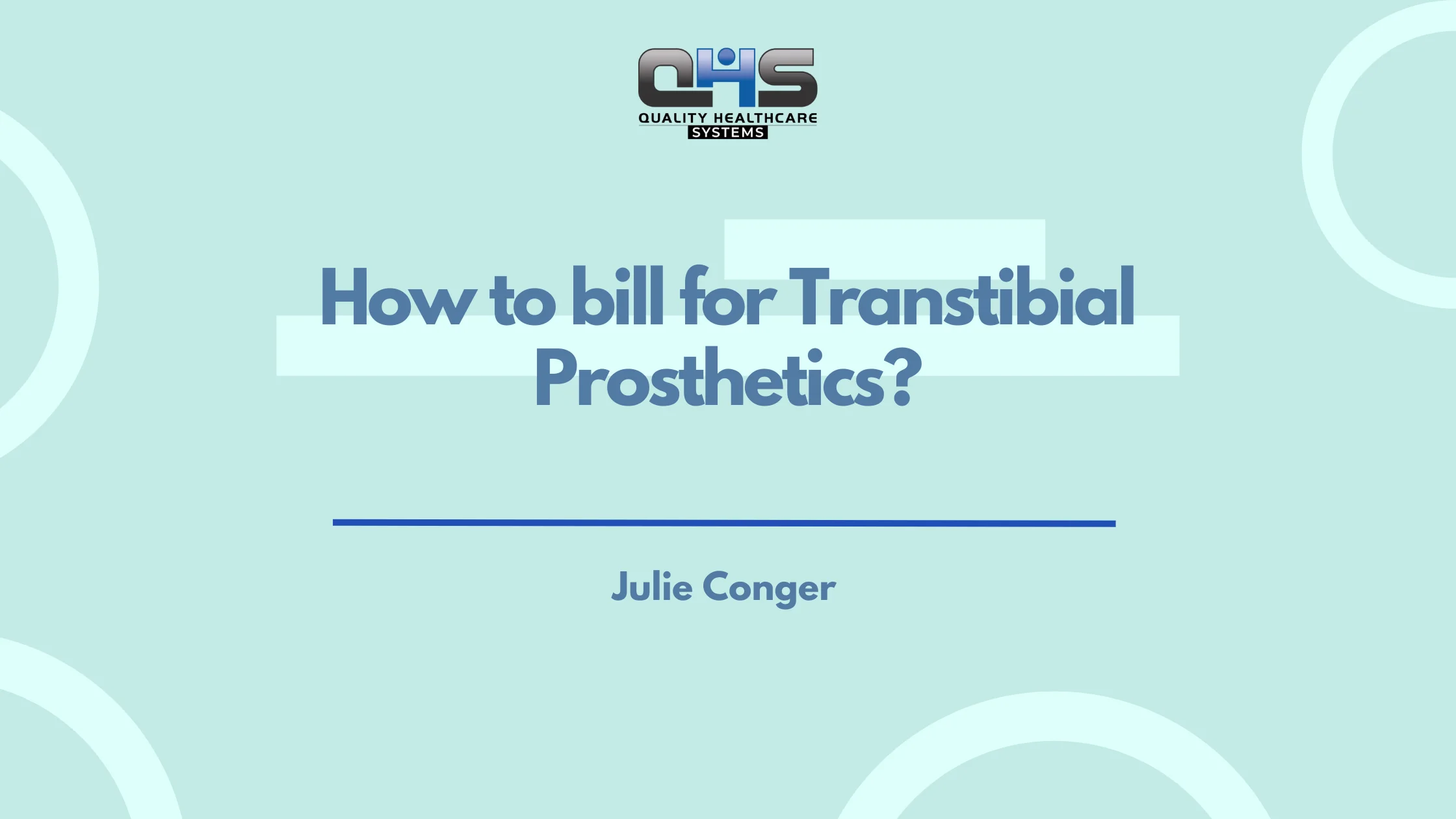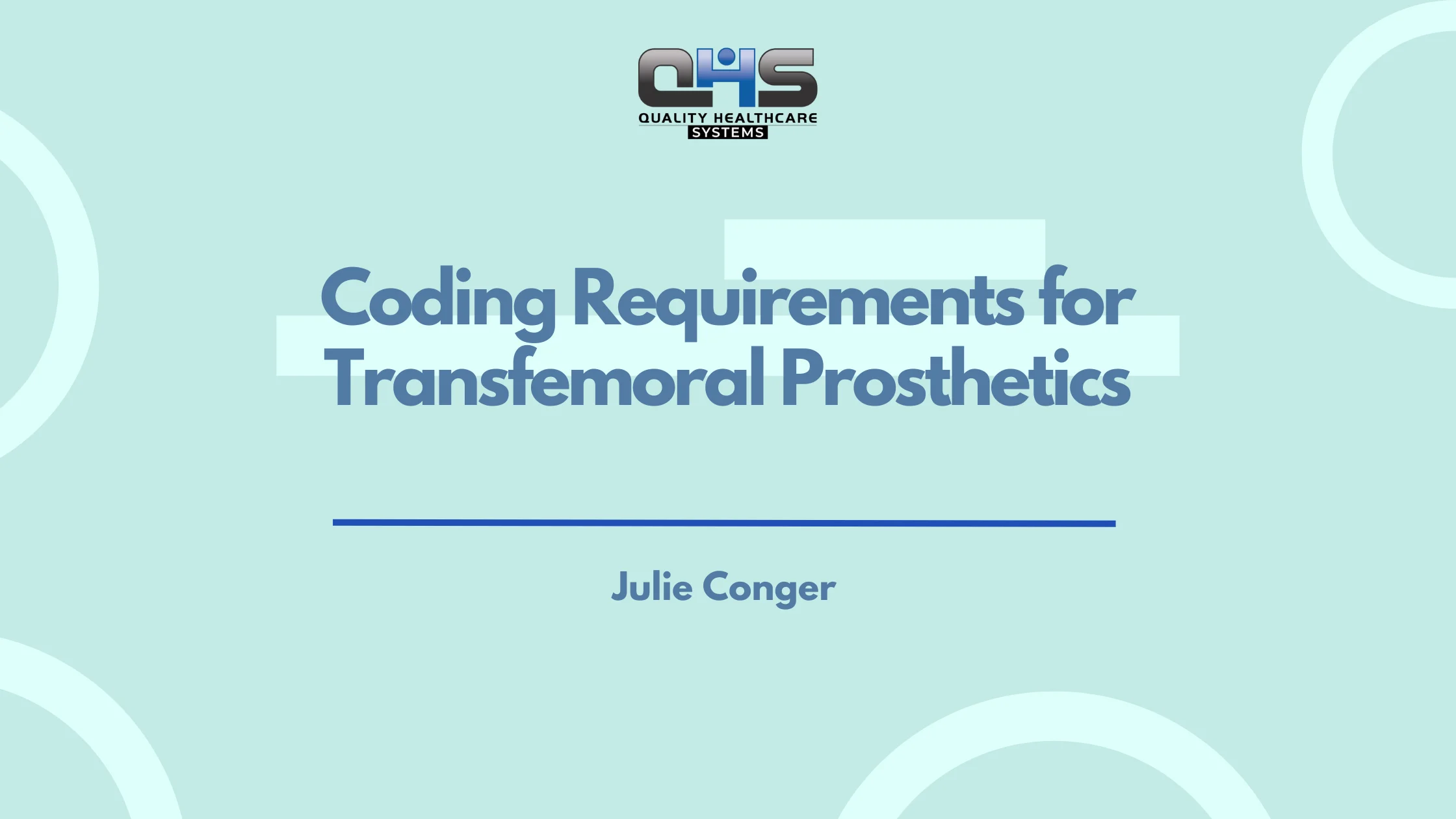Accurate billing is the lifeline of any Durable Medical Equipment (DME) provider. Even minor billing mistakes can lead to claim denials, delayed reimbursements, and significant financial losses. According to industry reports, nearly 30% of all DME claims are denied due to billing errors, and many providers lose thousands of dollars annually.
Understanding and correcting these medical billing mistakes can drastically improve cash flow and financial stability. This blog explores DME providers’ most common billing errors and provides actionable strategies to avoid them, ensuring a smoother reimbursement process.
Let’s dive in!
1. Incorrect Coding & Documentation Errors
Accurate coding is essential in DME billing, and errors in this area are one of the most common causes of claim denials and underpayments. Understanding key coding standards and ensuring precise documentation is critical to avoiding financial setbacks.
How Incorrect Coding Impacts DME Providers
Incorrect coding can trigger a chain reaction of problems; from claim rejections to delayed payments and even audits. For example:
- Using outdated or incorrect ICD-10, HCPCS, or CPT codes may misrepresent the condition being treated or the equipment prescribed.
- Incorrect use of modifiers can alter claim values, resulting in lower reimbursements or outright denials.
The Role of ICD-10, HCPCS, and CPT Codes in DME Billing
DME providers must understand these coding systems to ensure accurate billing:
- ICD-10 Codes — Used to describe medical diagnoses and justify the need for DME products.
- HCPCS Codes — Identify specific DME items, including wheelchairs, oxygen equipment, or prosthetics.
- CPT Codes — Detail medical procedures and services, though less common in DME billing.
Common Documentation Errors That Lead to Claim Rejections
Documentation errors are another major cause of billing problems. Common issues include:
- Missing physician orders or signatures.
- Incomplete patient medical history.
- Insufficient details supporting medical necessity.
Best Practices to Prevent Coding & Documentation Errors
To minimize errors and ensure smoother claim approvals:
- Conduct regular staff training to keep employees updated on code changes and billing protocols.
- Implement electronic health records (EHRs) to streamline documentation and improve data accuracy.
- Perform internal audits to identify coding errors and address them before submission.
| Explore: Common DME Billing Errors and How to Prevent Them
2. Failure to Verify Patient Eligibility & Insurance Coverage
Failing to confirm patient eligibility is a costly mistake that DME providers cannot afford to overlook. Insurance details change frequently, and outdated information can lead to denied claims and delayed payments.
The Impact of Missing or Outdated Eligibility Verification
When providers skip this crucial step, they risk:
- Delivering equipment to patients without active insurance coverage.
- Failing to meet insurer-specific requirements for coverage approval.
- Losing revenue due to preventable claim denials.
Why Insurance Coverage Rules Vary
Each insurer has unique guidelines for DME coverage. For instance:
- Medicare may cover certain equipment only under specific medical conditions.
- Private insurers may require additional paperwork or prior authorizations for certain products.
- Medicaid requirements vary significantly between states.
Strategies for Automating Eligibility Verification
Automating eligibility checks can reduce human error and improve efficiency. Best practices include:
- Using real-time verification tools that connect directly with insurance providers to ensure coverage details are accurate before claim submission.
- Implementing automated reminders to recheck eligibility for long-term rentals or repeat orders.
- Training staff to manage exceptions and follow up on complex cases.
3. Missing or Incomplete Prior Authorizations
Prior authorizations are required for specific DME products to confirm that they meet the medical necessity criteria set by insurers. Without this step, insurance providers may refuse to cover the cost, regardless of the equipment’s importance to patient care.
Common Reasons for Authorization Denials
DME providers frequently encounter issues such as:
- Incomplete or incorrect paperwork — Missing key details or submitting outdated forms can result in denials.
- Failure to meet payer-specific requirements — Different insurers have varying criteria that must be followed precisely.
- Delays in obtaining approvals — Failing to initiate the authorization process early enough can result in claim denials even after the equipment has been delivered.
Best Practices for Efficient Prior Authorizations
To improve authorization success rates and reduce delays:
- Develop a standardized checklist for authorization requests, ensuring all required documents and information are included.
- Different payers may require unique forms or supporting documentation. Keeping a reference database can streamline submissions.
- Initiate the authorization process as soon as possible to account for processing delays.
- Use dedicated tracking tools to monitor pending authorizations and follow up proactively.
- Ensure your team understands each payer’s authorization guidelines to reduce errors during submission.
4. Improper Claim Submission & Lack of Follow-Ups
Errors during claim submission are a leading cause of payment delays and denials. Identifying these mistakes and adopting proactive strategies can improve cash flow and reduce revenue losses.
Common Claim Submission Errors
- Missing or incorrect patient information: Incorrect policy numbers, incomplete patient demographics, or outdated insurance details can cause claim rejection.
- Omitting necessary documentation: Missing prescriptions, proof of delivery, or physician signatures can delay claims.
- Submitting claims after deadlines: Each insurer enforces strict deadlines for claim submissions, and missing these dates results in automatic denials.
The Importance of Timely and Accurate Submissions
Accurate and timely submissions ensure:
- Faster reimbursements with minimal delays.
- Reduced administrative time spent correcting rejected claims.
- Improved cash flow and financial stability.
Strategies to Improve Claim Submission and Follow-Up
- Implement Claim-Scrubbing Tools: Automated claim-scrubbing software detects errors before submission, ensuring claims are cleaner and less likely to be denied.
- Track Claim Status Proactively: Establish a robust tracking system to monitor claim progress, identify delays, and follow up with payers as needed.
- Create a Standardized Submission Checklist: Ensure staff follow a detailed checklist that includes verifying patient details, attaching required documentation, and meeting submission deadlines.
- Develop a Follow-Up System: Assign dedicated team members to manage outstanding claims, refile denied submissions promptly, and communicate with payers for clarification when required.
5. Ignoring Compliance & Audit Requirements
Failure to comply with Medicare, Medicaid, and private-payer regulations can lead to significant consequences, including:
- Penalties and fines: Non-compliance may result in substantial financial penalties.
- Reimbursement delays: Providers may face delays or denials if they fail to adhere to payer guidelines.
- Audit risks: Inadequate documentation or policy violations can trigger costly audits and investigations.
Common Compliance Risks for DME Suppliers
DME providers often face these compliance risks:
- Improper documentation: Missing physician orders, incomplete records, or lack of medical necessity details.
- Billing for non-covered services: Incorrect coding or misunderstanding payer policies can lead to rejected claims.
- Failure to meet payer-specific requirements: Overlooking unique documentation and coverage criteria for different insurers.
Best Practices for Ensuring Compliance and Audit Readiness
To reduce compliance risks and prepare for audits:
- Maintain comprehensive records: Document all patient interactions, prescriptions, and equipment deliveries thoroughly.
- Conduct routine internal audits: Regularly review your billing and documentation processes to catch errors early.
- Educate staff on regulations: Provide ongoing training on Medicare, Medicaid, and private-payer guidelines to ensure your team stays informed.
- Utilize compliance management software: Digital tools can track documentation, manage audits, and flag potential issues proactively.
| Also Read: 5 Ways to Survive a DME Compliance Audit and Avoid Risks
6. Not Having a Strong Denial Management Strategy
Unresolved denials can create significant cash flow problems for DME providers. Denied claims often represent lost revenue unless they are properly identified, corrected, and resubmitted. Prolonged delays in addressing denials can lead to write-offs and reduced financial stability.
Common Reasons for Denials and Solutions
Denials often result from common mistakes such as:
- Incomplete or inaccurate claim details: Missing patient demographics, policy numbers, or other key information can cause rejections.
- Medical necessity issues: Failing to provide adequate documentation to justify the need for equipment can lead to denials.
- Coding errors: Incorrect HCPCS or ICD-10 codes may result in claim rejections.
- Prior authorization issues: Missing or delayed authorizations can derail otherwise valid claims.
To address these issues:
- Review rejected claims to identify patterns and recurring errors.
- Implement thorough documentation checks to ensure all required details are provided.
- Use automated tools that highlight potential coding or documentation errors before submission.
Tips for an Effective Denial Management Process
Implementing a structured denial management strategy can significantly improve recovery rates and reduce revenue loss:
- Develop a Clear Workflow: Establish a defined process for tracking, reviewing, and appealing denied claims.
- Train Staff: Ensure employees understand common denial reasons and know how to respond effectively.
- Create a Dedicated Denial Team: Assign specialized staff to manage denials and follow up with payers.
- Leverage Technology: Use billing software that flags potential errors, tracks denials, and streamlines appeals.
- Monitor Key Metrics: Regularly assess denial rates, trends, and recovery rates to improve processes over time.
Conclusion
Avoiding these common medical billing mistakes is crucial for the financial health of DME providers. By ensuring accurate coding, verifying insurance eligibility, securing prior authorizations, submitting claims correctly, maintaining compliance, and implementing a strong denial management strategy, providers can maximize reimbursements and minimize financial losses.
QHS specializes in providing expert DME billing services, helping providers streamline their processes, reduce claim denials, and optimize reimbursements. Partner with us to ensure seamless billing and improved cash flow!
Read: How to Appeal Denied Claims for Prosthetic Device
FAQs
What are the most common billing mistakes that DME providers make?
The most common mistakes include incorrect coding, missing documentation, failure to verify insurance, lack of prior authorizations, late claim submissions, and poor denial management.
How can incorrect coding lead to claim denials?
Incorrect coding can lead to claim rejections because insurance providers require precise HCPCS, CPT, and ICD-10 codes to validate medical necessity and coverage eligibility.
Why is prior authorization important in DME billing?
Many insurance providers require prior authorization before approving payments for specific DME products. Without it, claims may be denied, leading to revenue losses.
What strategies can help DME providers reduce billing errors?
Implementing automated billing software, conducting internal audits, providing staff training, verifying patient insurance upfront, and tracking claim submissions can help reduce errors.
How does compliance affect reimbursement for DME providers?
Compliance with Medicare, Medicaid, and private payer regulations ensures uninterrupted reimbursements and prevents legal and financial penalties resulting from audit failures.






